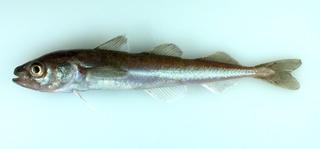Arctic Cod Bred in Captivity for First Time

Thursday, April 12 2012
If breeding fish sounds tricky – it is. That’s why when the Vancouver Aquarium announced last week that biologists had successfully bred Arctic cod in captivity, it was hailed as a scientific breakthrough.
Arctic cod are one of the few fish in the world that thrives in temperatures below zero degrees Celsius, which makes them one of the most abundant fish in the far north. Aquarium senior scientist Tak Oyama says that makes Arctic cod a critical link in the polar ecosystem.
“All predators probably eat Arctic cod. It’s basically a smaller fish and bigger fish eat that and seabirds or seals eat that and polar bears eat seals, so it’s fundamental to the ecosystem. So, if this food supply disappears, it crashes the entire chain.”
Despite its significance, very little is known about Arctic cod. Until now, scientists have struggled to keep the fish alive in captivity. Oyama says that’s because Arctic cod are very sensitive to temperature changes.
“[At] all the stages we have to keep them in a very cold condition. But cold condition is difficult to keep good water quality sometimes. So, we have to water change. But water change water has to be, of course, cold. They aren’t really good at handling water temperature differences. So, everything has to be really cold temperature and keeping it that way is the most challenge.”
Oyama says now that the Aquarium has perfected the process of rearing the fish, there should be more available for research. In fact, he says, he’s already had inquiries over the last few days from scientists who want to get their hands on them.
At the Aquarium itself, Oyama’s team is planning a study on how temperature changes affect Arctic cod development. He says that could shed some light on how climate change will affect the food web in the Arctic.
Although Arctic cod isn’t targeted commercially in either the United States or Canada, it’s a popular table fish in Russia and is increasingly being targeted by international fishing fleets in newly ice-free Arctic waters outside of any country’s exclusive economic zone. There are no sound estimates of its abundance or studies of how much can be safely harvested without negatively impacting the stock.



